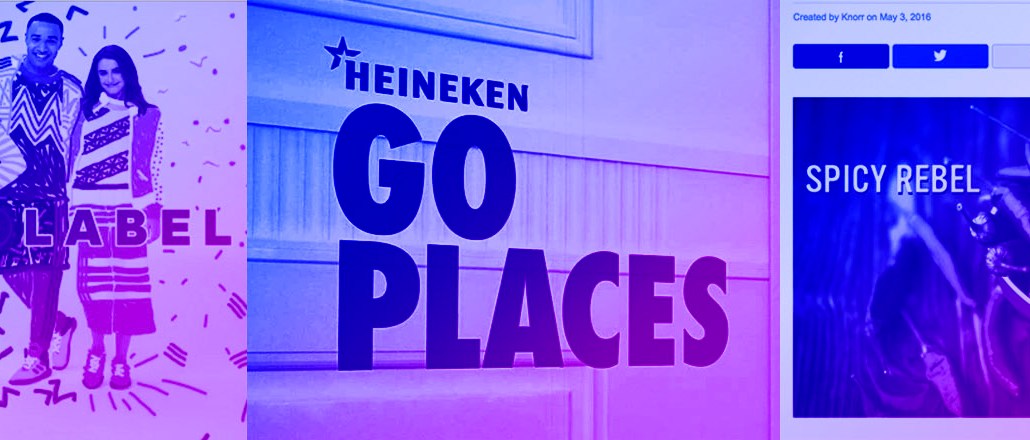The Hillary Clinton Campaign’s microsite and four other interactive content marketing campaigns done well

Brands are increasingly turning to interactive formats to make their content marketing campaigns stick. Whether they’re making quizzes or investing in virtual reality, brands now know that active experiences make for better marketing than lean-back content.
The following five interactive brand campaigns have achieved the highest standards a branded campaign could hope for. We actually enjoy connecting with them, and here’s why.
The Hillary Clinton Campaign’s “I Actually Like Hillary”
What it is: An interactive website
Why we love it: It really knows its audience.
Though many say the 2016 presidential election is pretty much in her bag, Hillary Clinton continues to wade through bad press. And as much as people express distaste for her opponent, Mr. Trump, many of them still can’t bring themselves to embrace Hillary with open arms, or even with closed arms and a cautious air kiss.
This interactive website presents Hillary skeptics with a series of her laudable accomplishments, each attributed to a reliable source. It also gives users a stock, sarcastic answer to learning about each new fact. To the point that “Hillary successfully fought to increase research funding for prostate cancer and asthma,” users have to click a button that reads, “That doesn’t affect me personally, so who cares?” to get to the next fact. The site’s cheeky rejoinders encourage users to click, leading them to more facts on the site.
Knorr’s “Flavour Obsession”
What it is: An interactive branded content campaign targeting millennials
Why we love it: It tells consumers “about their personalities” based on their flavor preferences.
Unilever’s biggest brand, Knorr, worked with authoring platform Playbuzz to create two custom interactive content items around food and flavor that provided insights into the personalities of those who engaged with them. A personality quiz and flip card item (which illustrates a flavor profile on one side and corresponding personality trait on the other) were distributed at scale to publishers with millennial readers across multiple regions to reach the brand’s target audience at various touch points.
These mobile-friendly, interactive items appeared this Spring as native spots on sites including Food Network UK, Cosmopolitan and The Daily Record. The corresponding copy was tailored to each publisher to ensure the branded aspect felt way less heavy-handed. For example Coach, a health and fitness publication, used it to dole out recipe tips. Overall, the campaign proved easy to digest, resulting in positive shifts in brand metrics – such as an increase in brand awareness and likelihood to recommend Knorr products –for those exposed to the Playbuzz-powered content.
Heineken’s “Go Places with Heineken USA”
What it is: An interactive video
Why we love it: It accomplishes its goal—making Heineken look like a fun place to work.
To interest potential candidates in an internship with the Dutch beer company, Heineken debuted a video cleverly structured like a job interview. Viewers must answer questions an (especially charismatic) interviewer might ask in real time like, “Would you rather be world famous or have strong roots?” As they answer questions, “candidates” are introduced to different parts of the plant, business and company culture.
The precedent for this campaign came in 2013 when Heineken released “The Candidate,” a campaign in which potential interns underwent a very unconventional job interview. That video got 2.8 million views. “Go Places” expands on that success by conflating the video with the interview, keeping participants hooked by giving them only about five seconds to answer personal questions. The result? The most fun you’ve ever had jockeying for a job.
AT&T’s “It Can Wait”
What it is: A traveling VR experience; also available online
Why we love it: It puts viewers directly in the situation it’s trying to prevent.
This AT&T campaign to prevent texting and driving spans social media with the “It Can Wait” hashtag, which has been used over 150,000 times since July 2015, and a VR component that 20,846 people have used in 286 cities across the US. So far, more than 11 million people have responded to the campaign’s CTA by taking a pledge never to text while driving.
The VR experience (adapted here for desktop) makes a strong statement by immersing viewers in the act of texting while driving, and the consequences aren’t pretty. The fact that a phone service provider is taking such a strong stance on an issue perpetrated by phone users makes AT&T look like a brand that truly cares about its customers.
Adidas’s “#MyNeoLabel”
What it is: An interactive Snapchat competition
Why we love it: It’s an art project that’s also a competition that’s also a social conversation that’s also—potentially—a physical product.
Adidas gave customers the chance to design their own shoes using Snapchat’s platform. From September 23rd to October 20th, they could use the social app’s messaging system to submit designs with the chance to win the manifestation of those products and a trip to the company’s Design Bootcamp at the Adidas headquarters in Germany.
This native campaign meets consumers where they’re already at, Snapchat, making conversions seamless. Adidas has also been releasing some of the designs it’s received as the campaign progresses, showing people who haven’t yet entered the competition that they, too, can easily do this. All they need is a Snapchat account and a finger to draw in the app.
Which 2016 interactive content marketing campaign did you like best?
More in Marketing

Beverage brands update Dry January marketing based on changing consumer habits
Today, people generally seek balance when pursuing their personalized wellness goals in a new year.

Future of Marketing Briefing: X claims an ad comeback, reality proves out a different thesis
The comeback story X wants told, and the ad business it actually has.

Mythbuster: What AI is not about to do in advertising
As the hype around AI thins into something closer to reality, the ad industry is quietly drawing a line around what LLMs can do — and what they will not be trusted to touch.





